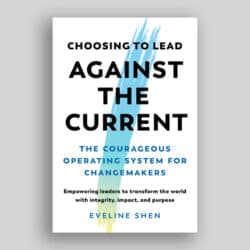Statistics Canada launches its first targeted attempt to measure diversity on governing boards in the charitable and non-profit sector.
Statistics Canada is launching its first targeted attempt to measure diversity on governing boards in the charitable and non-profit sector.
It will release the voluntary, crowdsourced survey – designed collaboratively with sector representatives, academics, and StatsCan staff – on December 4. The survey will be available online until the end of the month. It asks board members about socio-demographic information, including their race, gender, sexual orientation, age, immigration status, and disability. It also asks them to describe the communities they serve and whether their boards have a written policy about diversity.
According to Larry MacNabb, a director at the federal agency, StatsCan will send the survey to as many organizations as possible, with directions to distribute it to board members. It will also share links to the survey on social media. “The more responses we get, the more confident we can be in the data,” he says. “It will help us start telling a story and do better in measuring this.”
There is no comprehensive list of non-profits across Canada. MacNabb says his perception of diversity was challenged by “the breadth and range of the organizations. It’s a really vibrant sector.” But StatsCan identified some exclusions, including private non-profits like condo boards, for example. Only registered charities and public non-profits can access the survey.
While this may be the first Canadian attempt to systematically gather data about the sector’s governance profile, similar surveys around the world indicate that diversity remains an issue across non-profit boards. A 2018 UK study found that 62% of the country’s top charities had all-white boards. The same year, another British group reported that only 9.6% of board trustees in major UK charities were members of ethno-cultural minorities. And a 2017 survey of the executive directors of the largest foundations and non-profits in the United States found that 87% were white.
The timing is fortuitous, says Ratna Omidvar, a Senator who has been working closely with StatsCan to develop the survey.
In June 2019, Omidvar was working to amend the tax form for non-profits and charities to include mandatory diversity disclosure for directors, but the effort stalled. In the wake of the calls for action from the Black Lives Matter protests happening across the world this past summer, Omidvar wrote an open letter, published in June in The Philanthropist, urging the sector to start collecting demographic information on its own. She noted how corporate boards have been pressured into reporting on equity and creating diversity plans, whereas the charitable sector, which accounts for 8% of Canada’s GDP, has no such obligations.
Canada’s chief statistician, Anil Arora, read Omidvar’s letter and proposed that Statistics Canada could develop something. “I’m completely impressed by StatsCan’s willingness here,” Omidvar says. “We really need the evidence of governance, because the data we have right now is very spotty. Where it is available, we see a sector that embraces many issues of marginalization but that its governing leadership is very homogenous.”
StatsCan has used crowdsourced online surveys much more during the pandemic to develop snapshots on COVID-19’s impact on everything from business to mental health to the effect on certain communities. In July, the agency also started collecting race-based data in its monthly Labour Force Survey. Around 250,000 Canadians responded to these surveys early in the pandemic, but those figures have dropped to 15-30,000 more recently.
The pandemic crisis has also created a “heightened awareness” of the contributions of charities and non-profits, Omidvar says. The disproportionate impacts of the pandemic on communities of colour and lower income Canadians was a reflective moment for the sector itself, amid a backdrop of racial unrest in the US.
The reasons to broaden board diversity are obvious, as Eva Salinas reported in The Philanthropist in October. Boards make decisions about how to use public funds and which communities to help.
“The kind of decisions that are made in the absence of diversity are weaker,” says Peter Dinsdale, the president and CEO of YMCA Canada. “If you as a director haven’t been stopped by cops at night, how can you be action-oriented and serve the most disadvantaged?”
The problem, Dinsdale adds, is that governing board members naturally attract co-workers who operate in the same social circles. Any effort to diversify these circles “takes a huge intentional effort,” he says, noting that the 16-member board of YMCA now has more women than men for the first time in its history.
Dinsdale believes the survey will show that there are structural barriers to entry that prevent boards from being representative. Board directors need to have certain experiences, the ability to raise large sums, or connections to wealthy individuals. These barriers are “not intentional or nefarious,” Dinsdale says, but they need to change.
Bailey Greenspon, acting co-CEO of G(irls)20, who helps lead a movement to include more girls on boards, agreed, noting that these structural obstacles tend to favour older, rich, white people.
“We need a new skills matrix that includes the practical skills like fundraising, event planning and accounting with lived experiences of problems we’re trying to address,” she says, adding that this matrix could include seeking new perspectives on how to use social media, fresh ideas for crowdfunding, and more actionable responses to movements like Black Lives Matter.
“It’s not just about adding diverse people,” Greenspon notes. For non-profits and charities to effectively contend with, and respond to, issues of diversity, equity, and inclusion “board culture needs to change so [new members] aren’t there to check a box but to add value and expand our efforts.”
For this shift to happen, Imagine Canada Chair Margaret Mason says, non-profit and charitable organizations will need a lot of help figure out how “to diversify in an authentic and non token fashion.
“If a Board is not diverse, figuring out how to connect to networks of people who might be interested in the organization and willing to serve, is the biggest issue,” she says. “There is just no idea where or how to start that doesn’t potentially offend candidates they would like to recruit, no idea how to position their organization so that it attracts potential inquiries from diverse candidates.”
There is a “ceiling” in the sector for BIPOC people, says Mohammed Hashim, the new executive director of the Canadian Race Relations Foundation. Frontline staff are predominately very diverse, but “the higher up you go, the less diversity you see.”
For Hashim, this is an issue because people from marginalized backgrounds, including new immigrants and refugees, use many of the services provided by the sector. Hashim says these communities have created services for themselves over time because they didn’t find it in the established charitable sector. Founders spoke the same language as the people who needed help, understood the culture and knew how to navigate the barriers.
“There needs to be a real trust to include programs and services in organizations [that] are serving emerging new communities into the social services network,” Hashim says. “This survey could help at least demonstrate how those larger decisions may or may not be connected to what’s happening in communities across the country.”
For most observers, the survey is a good start to get to the core of these larger structural issues of board culture, even if the data it provides may be imperfect.
Shannon Kindornay, director of research, policy, and practice at Cooperation Canada and another member of the StatsCan advisory group, hopes the survey will eventually show not just how board members identify, but also how they work on, and in, systems of diversity and inclusion. For instance, is there a board level policy on diversity and do they undergo anti-racism training? Kindornay is helping develop a self-audit framework for the sector, to be launched in early 2021, to create an accountability mechanism for boards when it comes to these issues.
“The survey will reaffirm what we already know,” Kindornay says. “It behooves our sector and allies to concretely move towards action.”
Patti Pon, president and CEO of Calgary Arts Development and a director on the Agora Foundation board of directors, agrees, noting the survey won’t change the system of funders, donors, and recipients that was “established with a colonial mindset.
“It is one thing to collect the data,” observes Pon. “It is quite something else to do something with it. It is incumbent to those who have a seat at the table to . . . recognize this information is not just numbers on a page. We’re here for everyone. We’re on all sides of the fence, in every sector. If Canada really is a mosaic, our decision-making table should look like it.”


